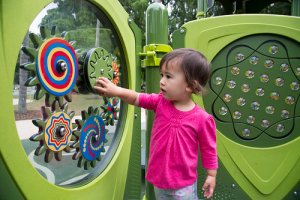What is Sensory Processing Disorder?
Dr. A. Jean Ayres was the first to delve into sensory processing theory back in 1972. She wanted to identify children who seemed to have difficulty integrating various sensory stimuli. It is a disorder that typically effects those with a neurological condition such as Autism Spectrum Disorder, Attention Deficit Hyperactivity Disorder, or Cognitive Disorder. Children on the Autism Spectrum often have difficulty processing sensory information in their environment. This can affect they way they learn, interact with the world, and behave. They do not intergrate information the same way as others and that is the reason they respond differently than a typically developing child.
Fact or Fiction?
Sensory Processing Disorder is not an official diagnosis. It cannot be found in the DSM-V (Diagnostic and Statistical Manual of Mental Disorders) and therefore treatment can be difficult to be reimbursed. However, it is widely recognized by school and healthcare professionals.
Sensory Systems
Most people are familiar with five sensory systems such as visual (sight), auditory (hearing), tactile (touch) , olfactory (smell) , and gustatory (taste). However, there are additional senses now being realized that play a large role in sensory integration and processing. These senses are vestibular (balance and orientation to space), proprioception (sense of muscle and joint movements), and interoception (sense of internal organs and bodily functions).
Sensory Seeking Vs Sensory Avoidant
Some children are sensory seeking which means they have hyposensitivity. They seek out sensory input such as running and crashing into objects, enjoying playing with paint, sand, glue, water, slime, etc, jumping, flapping, hopping, rough play, producing vocal stimulation and sounds, chewing on toys or other inedible items, etc.
Some children are sensory avoidant which means they have hypersensitivity. They avoid sensory input such as being touched or hugged, loud sounds, bright lights, wearing uncomfortable clothing, swinging, jumping, bumping into others or objects, etc.

By: Simon Kellogg
Occupational Therapy Intervention
Occupational Therapy tries to help these children organize the information their body receives in order to produce more appropriate reactions. Children can receive services in a clinic or while in school. Therapists will use assessment tools to identify specific areas of concern. Each child will have a tailored plan and specific goals they work towards. Clinicians used evidence based-approaches and collaborate with other team members in order to improve their performance in school and at home.
References
Critz, C., Blake, K., & Nogueira, E. (2015). Sensory processing challenges in children. Journal for Nurse Practitioners, 11(7), 710–716. https://doi.org/10.1016/j.nurpra.2015.04.016
“Your 8 Senses.” Sensory Processing Disorder – STAR Institute, www.spdstar.org/basic/your-8-senses.
Morin, Amanda. “Sensory Seeking and Sensory Avoiding: What You Need to Know.” Sensory Seeking vs. Sensory Avoiding in Children, Understood, 16 Oct. 2019, www.understood.org/en/learning-thinking-differences/child-learning-disabilities/sensory-processing-issues/sensory-seeking-and-sensory-avoiding-what-you-need-to-know.
Clark, G. F., Watling, R., Parham, L. D., & Schaaf, R. (2019). Occupational Therapy Interventions for Children and Youth With Challenges in Sensory Integration and Sensory Processing: A School-Based Practice Case Example. American Journal of Occupational Therapy, 73(3), 1–8. https://doi.org/10.5014/ajot.2019.733001

